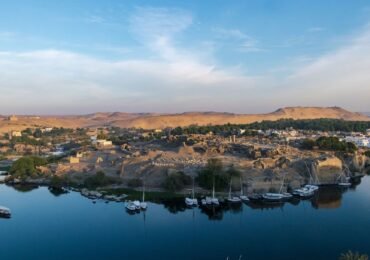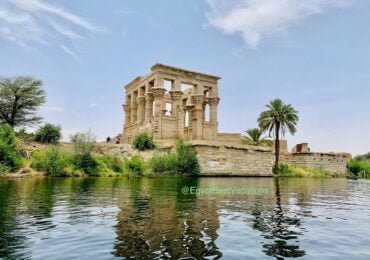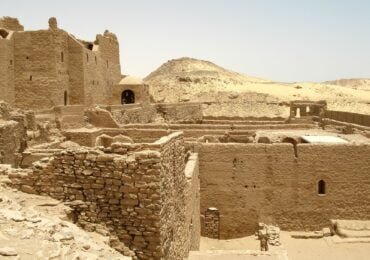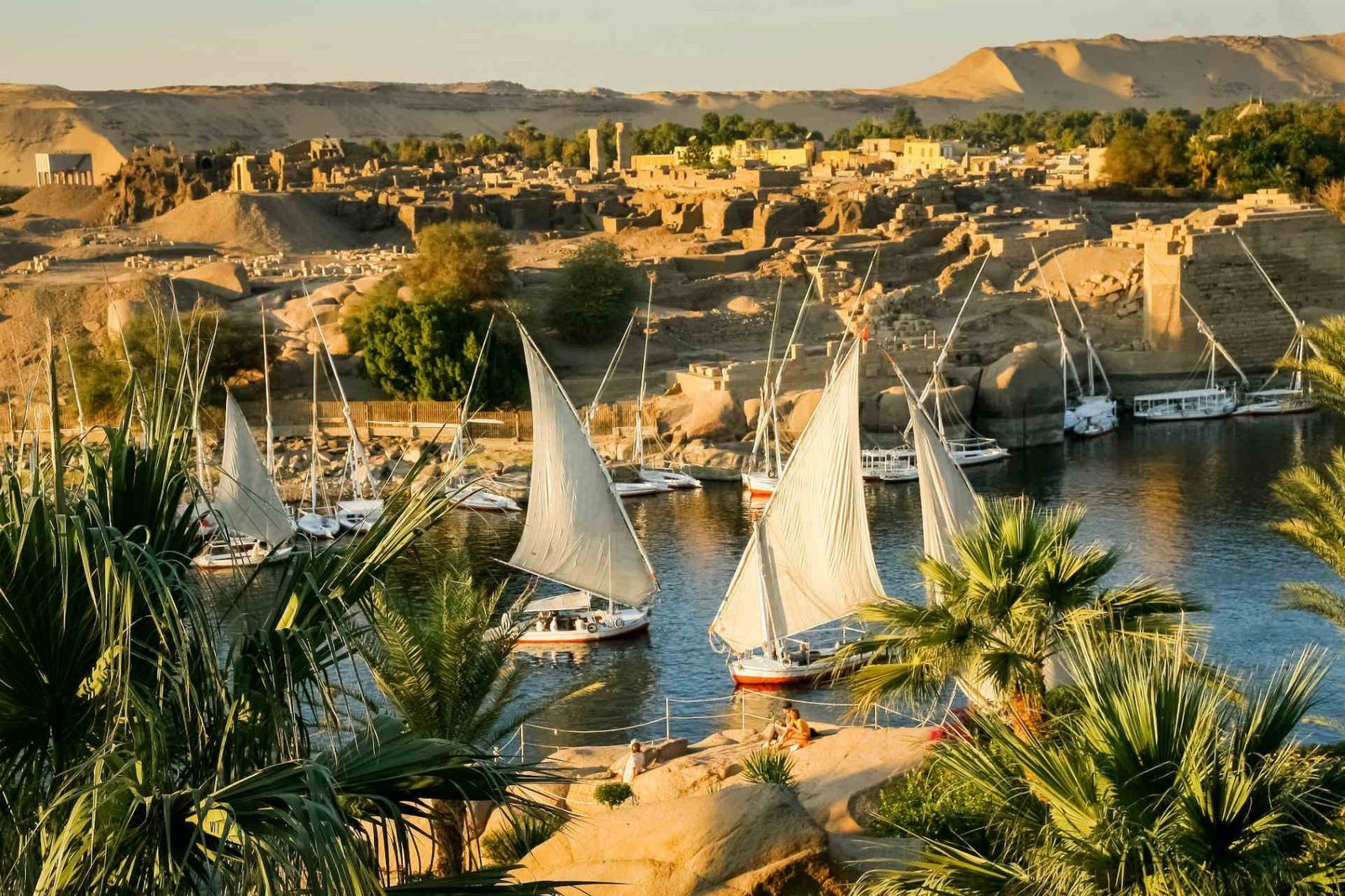Unveiling Aswan’s Past: A Journey Through Ancient Egypt’s Crown Jewel
Join us on an immersive journey as we uncover the layers of Aswan’s past, where each step is an echo of a bygone era. Nestled on the banks of the mighty Nile River, Aswan stands as a living testament to Egypt’s historical richness. Often overshadowed by more prominent cities like Cairo and Luxor. Aswan unfolds a captivating narrative of resilience, grandeur, and cultural diversity within its ancient stones.
Aswan’s Past: Nubian Connection
Aswan’s past importance during the Pharaonic era extended beyond its geographical boundaries, fostering a unique cultural fusion with Nubia. Functioning as a gateway to the southern realms, the city became a melting pot where Egyptian and Nubian civilizations converged. This cultural interplay is evident in Aswan’s architecture, art, and traditions, creating a dynamic tapestry that reflects the richness of both societies.
Aswan during the Pharaonic era emerges as a vibrant hub of culture, spirituality, and craftsmanship. The remnants of this glorious past persist in the enduring stones of the Philae Temple, the monumental statues of Abu Simbel, and the quarries that supplied materials for Egypt’s architectural marvels.
Aswan served as a vital center for extracting the finest granite, essential for monumental constructions in ancient Egypt. The Unfinished Obelisk, still embedded in Aswan’s granite quarries, provides insight into the monumental efforts of ancient craftsmen. Picture the toil of artisans as they chiseled colossal obelisks using rudimentary tools, utilizing the region’s natural resources to shape monuments that would endure through the ages.
Related tour: Tour to Philae Temple, High Dam and the Unfinished Obelisk
Aswan in the Old Kingdom: Unveiling the Origins of Ancient Egypt
The significance of Aswan’s past dates back to the Old Kingdom (2700-2000 BC). The Old Kingdom was marked by monumental architectural achievements, and at the heart of this endeavor was Aswan. The city’s granite quarries, which supplied the prized stone for constructing iconic monuments, played a vital role. These quarries were the birthplace of colossal obelisks and statues, meticulously carved by skilled artisans. Envision the industrious labor that contributed to the creation of pyramids, temples, and statues—monuments that would come to symbolize the enduring legacy of the Old Kingdom’s architectural prowess.
Positioned at the southernmost tip of ancient Egypt, Aswan held a strategic role as a bustling trade hub during the Old Kingdom. The city served as a conduit for goods entering and departing Egypt, fostering economic prosperity and cultural exchange. Trace the remnants of ancient trade routes that threaded through Aswan, linking the kingdom to Nubia and beyond. Picture the vibrant marketplace that animated the city during this golden epoch of trade and commerce.
At the core of Aswan, the Temple of Elephantine stood as a spiritual refuge during the Old Kingdom. Dedicated to Khnum, the ram-headed god believed to safeguard the Nile’s inundation, this temple was a focal point for religious rituals and ceremonies. Roam through the sacred halls and courtyards, envisioning the devout worshippers who sought divine blessings for abundant harvests and protection from the gods.

Related tour: Tour to Elephantine Island and Tombs of Nobles in Aswan
The proximity of Aswan to Nubia facilitated a rich tapestry of cultural exchange during the Old Kingdom. The city became a melting pot where Egyptian and Nubian traditions intermingled. Observe the evidence of this cultural fusion in the art, architecture, and daily life of Aswan during this era—a testament to the interconnectedness of these ancient civilizations.
Aswan’s past: Middle Kingdom
Throughout the Middle Kingdom (2000-1650 BC), Aswan retained its strategic role as a gateway to the southern territories of ancient Egypt. The city served as a crucial hub for trade and military ventures into Nubia. Visualize the ancient trade caravans traversing through Aswan, laden with goods that forged connections with neighboring lands. As a military outpost, Aswan played a pivotal role in maintaining stability and asserting control over the southern regions.
The Middle Kingdom witnessed a resurgence in artistic and architectural endeavors, and Aswan showcased its prowess through the construction of temples and shrines. Explore the remnants of these structures, where intricately carved reliefs and statues narrate tales of religious devotion and the artistic renaissance of the time. The Temple of Khnum at Elephantine Island stands as a testament to Aswan’s spiritual significance during this era, reflecting the city’s commitment to cultural expression.
New Kingdom: Aswan’s past Golden Era
In the New Kingdom (1550-1050 BC), Aswan retained its strategic importance as a pivotal outpost for imperial aspirations. The city played a crucial role as a gateway for military expeditions into Nubia and beyond. A testament to the pharaohs’ ambition to extend their influence. Trace the remnants of defensive structures and military installations, silent witnesses to Aswan’s pivotal role in asserting control over southern territories.
The New Kingdom heralded a golden age of architectural brilliance, and Aswan emerged as a hub for awe-inspiring temples and obelisks. The Temple of Abu Simbel, stands as an enduring example of the architectural prowess of the time. From intricately carved reliefs to towering obelisks, including the renowned Unfinished Obelisk. Aswan’s craftsmanship during the New Kingdom epitomized the grandeur of pharaonic aspirations.

Related tour: Tour to Abu Simbel Temples by road
Aswan continued to thrive as a commercial center during the New Kingdom, facilitated by its strategic location. The city’s bustling trade routes connected Egypt to the Red Sea and beyond, fostering economic prosperity. Explore the remnants of ancient marketplaces, where the exchange of goods fueled the economic vibrancy of Aswan during this golden epoch.
Aswan in the Hellenistic Era
During the Hellenistic period (332-30 BC), Aswan became a crossroads where Greek and Egyptian cultures intertwined. Functioning as a hub for trade and commerce, the city embraced a diverse array of ideas, art, and philosophies. Marvel at the archaeological evidence that reveals this cultural amalgamation, where Greek and Egyptian elements intermingled to form a distinctive tapestry that characterized Aswan during this transformative epoch.
The island of Elephantine, nestled within Aswan, was home to a vibrant Greek community during the Hellenistic period. The Philae Temple, originally dedicated to the goddess Isis in ancient Egyptian times, underwent a metamorphosis during the Hellenistic era. Observe the melding of Greek architectural features with traditional Egyptian design, resulting in a unique synthesis that reflects the cultural exchange prevalent in Aswan. The Corinthian columns and Hellenistic reliefs added during this period tell a story of architectural innovation influenced by Greek aesthetics.

Related tour: Tour to Philae Temple in Aswan
Aswan maintained strategic importance during the Hellenistic era, particularly under Ptolemaic rule. Recognizing the city’s significance as a gateway to southern territories and a key center for trade and military endeavors, the Ptolemies left their mark. While the Hellenistic period of Aswan’s past marked a time of transition in Aswan’s history, its cultural legacy persisted. Aswan, with its fusion of Egyptian and Hellenistic elements, stands as a testament to the cultural resilience and adaptability that characterized the region during this transformative era.
Aswan in Transition: Roman – Christian Era
Under Roman rule, Aswan played a pivotal role as a provincial center within the expansive Roman Empire. The remnants of Roman structures, administrative centers, and defensive installations attest to the city’s strategic significance. Notably, the architectural influences from Rome are evident in the temples and public buildings, showcasing Aswan’s integration into the broader administrative fabric of the Roman Empire.
As the Roman Empire left its imprint, the Philae Temple underwent a transformation that mirrored the evolving cultural landscape. Witness the incorporation of Roman architectural elements and the rededication of the temple to the goddess Isis, reflecting the continuity of religious practices amidst cultural changes. The Philae Temple once again became a focal point for worship and cultural exchange during this period of transition.
With the rise of Christianity, Aswan experienced a profound shift in its religious identity. Remnants of early Christian churches and structures bear witness to the coexistence of traditional Egyptian religious practices and the growing influence of Christianity in Aswan’s cultural fabric.

Related tour: Tour to St. Simeon Monastery in Aswan
The desolate landscapes surrounding Aswan became retreats for Christian monastic communities seeking spiritual solitude. Explore the remnants of ancient monasteries, such as the Monastery of Saint Simeon. It providing a glimpse into the ascetic lifestyle embraced by early Christian monks and the lasting impact of Christian spirituality on the outskirts of Aswan.
Related topic: Egypt Spiritual Tours
Islamic Aswan’s Past
The Islamic era heralded a cultural revival in Aswan, imprinting the city’s architecture with the intricate beauty of Islamic design. The infusion of geometric patterns, calligraphy, and domed structures narrates a tale of cultural blossoming during Aswan’s Islamic era. The Islamic era in Aswan witnessed a harmonious fusion of Nubian and Islamic cultural elements, creating a distinctive synthesis. Traverse the remnants of structures that showcase this seamless blending, where architectural styles and artistic expressions entwined gracefully. This fusion serves as a testament to Aswan’s interconnectedness with neighboring regions during this transformative epoch.
Aswan became a focal point for Islamic scholarship and learning during this era. These centers of learning attracted scholars, contributing to the intellectual vibrancy that characterized Aswan’s cultural landscape. Throughout the Islamic era, Aswan maintained its pivotal role as a bustling trade and navigation hub. Remnants of quays, docks, and trade-related infrastructure illustrate the city’s sustained prosperity and its crucial function in facilitating trade along the Nile.
Modern Aswan
In recent years, Aswan has undergone a remarkable urban transformation, seamlessly integrating modern infrastructure with its historical charm. The cityscape is adorned with contemporary structures that coexist harmoniously with ancient landmarks, creating a unique juxtaposition of the old and the new.
In the face of modernization, Aswan remains steadfast in preserving its cultural heritage. Ongoing conservation projects reflect the city’s commitment to safeguarding ancient sites, temples, and artifacts. Notably, the Nubian Museum stands as a testament to Aswan’s dedication to preserving the rich cultural legacy of the Nubian people, demonstrating a harmonious blend of tradition and contemporary stewardship.
Aswan has become a sought-after destination for global travelers seeking an authentic Egyptian experience. The city’s modern hospitality industry caters to a diverse range of visitors, offering accommodations ranging from luxurious resorts to charming boutique hotels. Explore the Nile aboard modern vessels that provide both comfort and scenic beauty, inviting guests to immerse themselves in the allure of Aswan.
Related topic: Egypt River Nile cruises
Aswan’s modern identity includes a commitment to sustainable practices. The Aswan High Dam, a monumental engineering achievement, not only regulates the Nile’s annual flooding but also contributes significantly to Egypt’s electricity production through hydropower. This reflects Aswan’s embrace of modern technologies to address contemporary challenges while maintaining a delicate balance with the environment.
Modern Aswan has become a vibrant hub for cultural festivals and events that celebrate the diversity of its residents. From traditional Nubian music festivals to international cultural gatherings, the city provides a platform for artists, musicians, and intellectuals to converge and share their talents. These events contribute to the dynamic cultural mosaic that defines Aswan in the contemporary era.
Aswan’s strategic location continues to be a driving force behind its economic vitality in the modern age. The city’s economy flourishes with thriving trade, industrial zones, and a growing tourism sector. Bustling markets and commercial enterprises stand as symbols of Aswan’s adaptability and prosperity in the ever-evolving global landscape.
Aswan’s past conclusion
Aswan, with its amalgamation of ancient wonders and modern achievements, invites travelers to peel back the layers of its past. From the grandeur of Philae to the enduring legacy of Abu Simbel and the vibrant Nubian culture, Aswan’s history is a captivating narrative waiting to be discovered. Join us on this enriching journey through time, where each step echoes the tales of the past, making Aswan a truly timeless destination that seamlessly bridges antiquity with the contemporary world.

